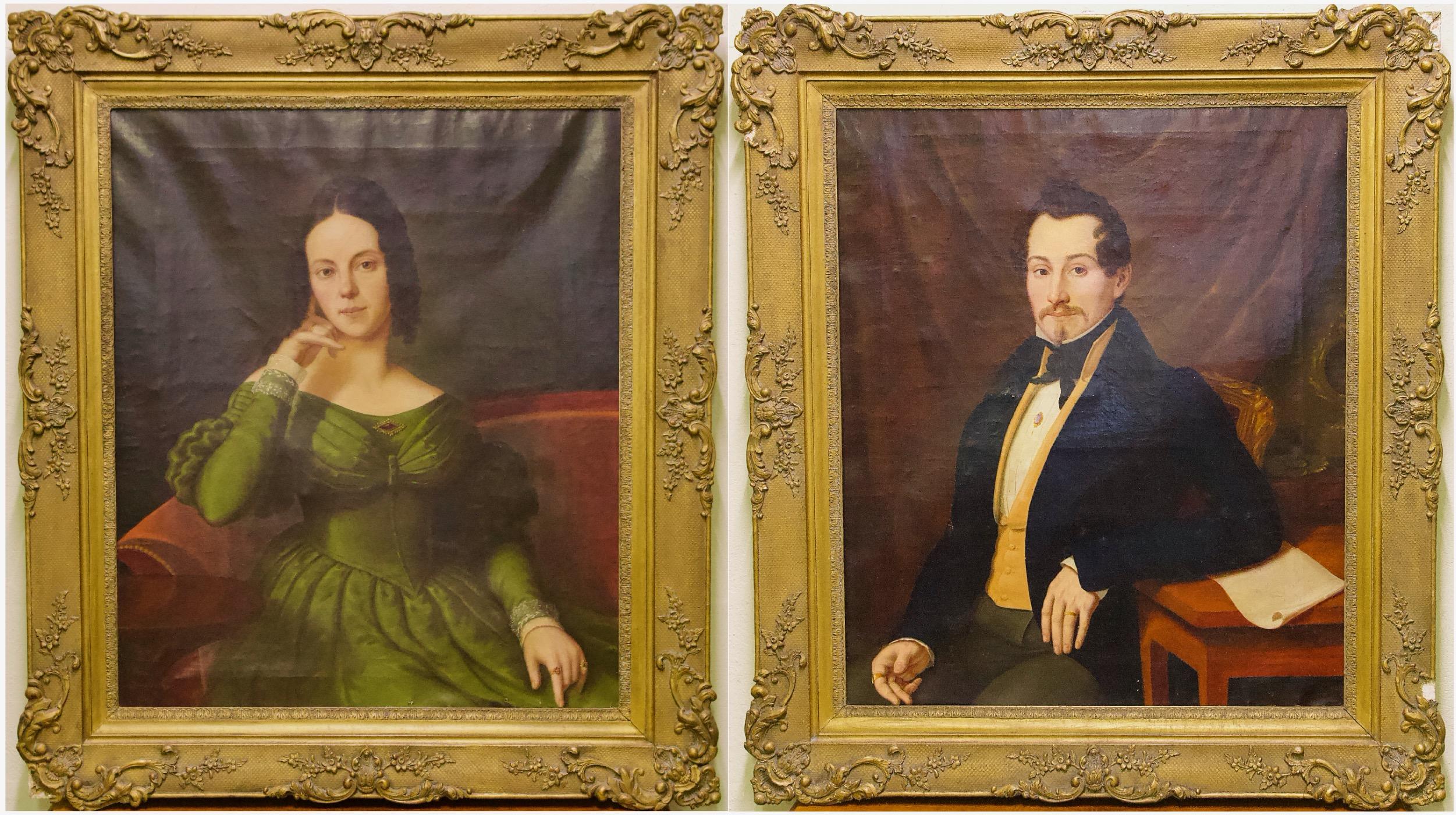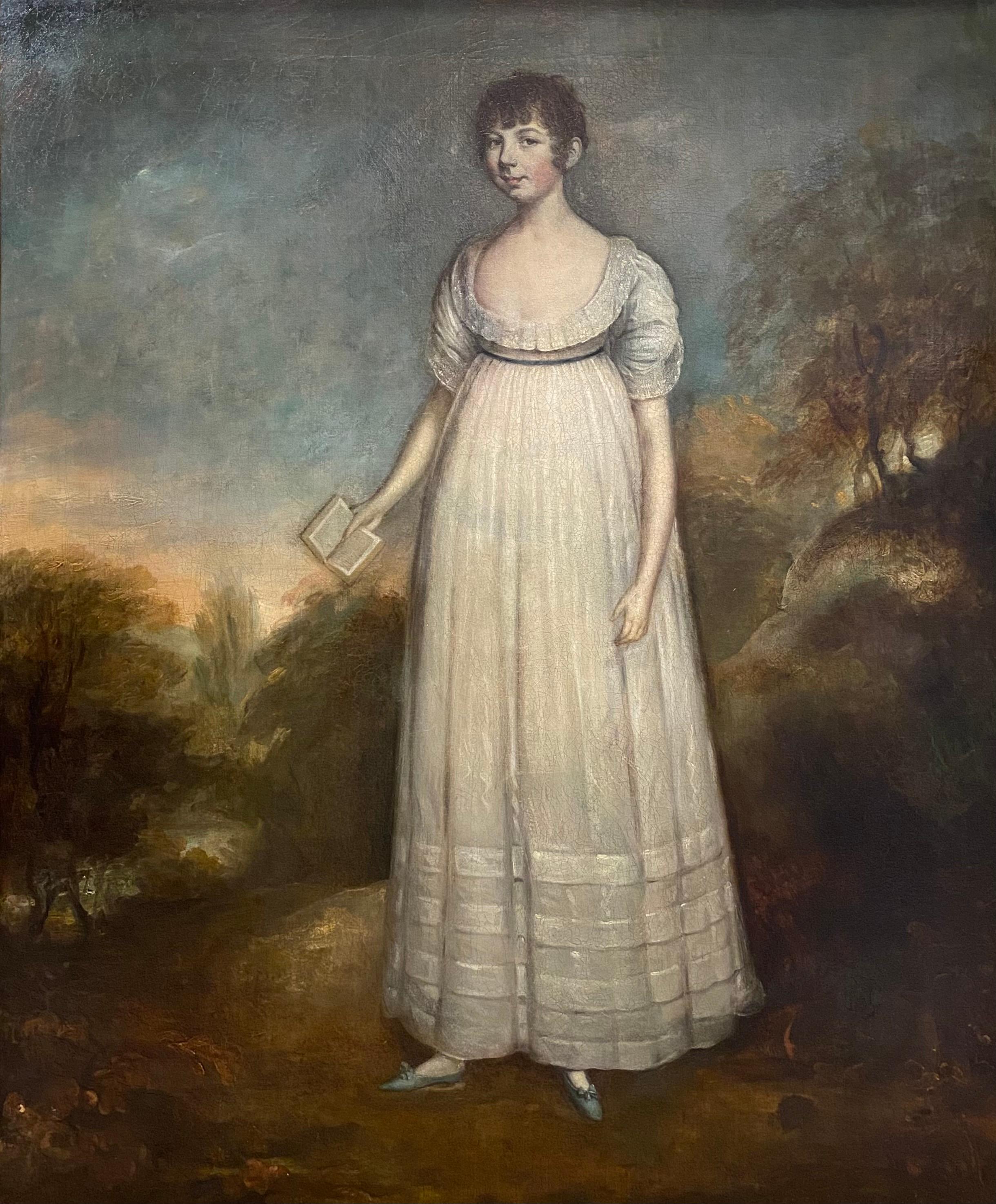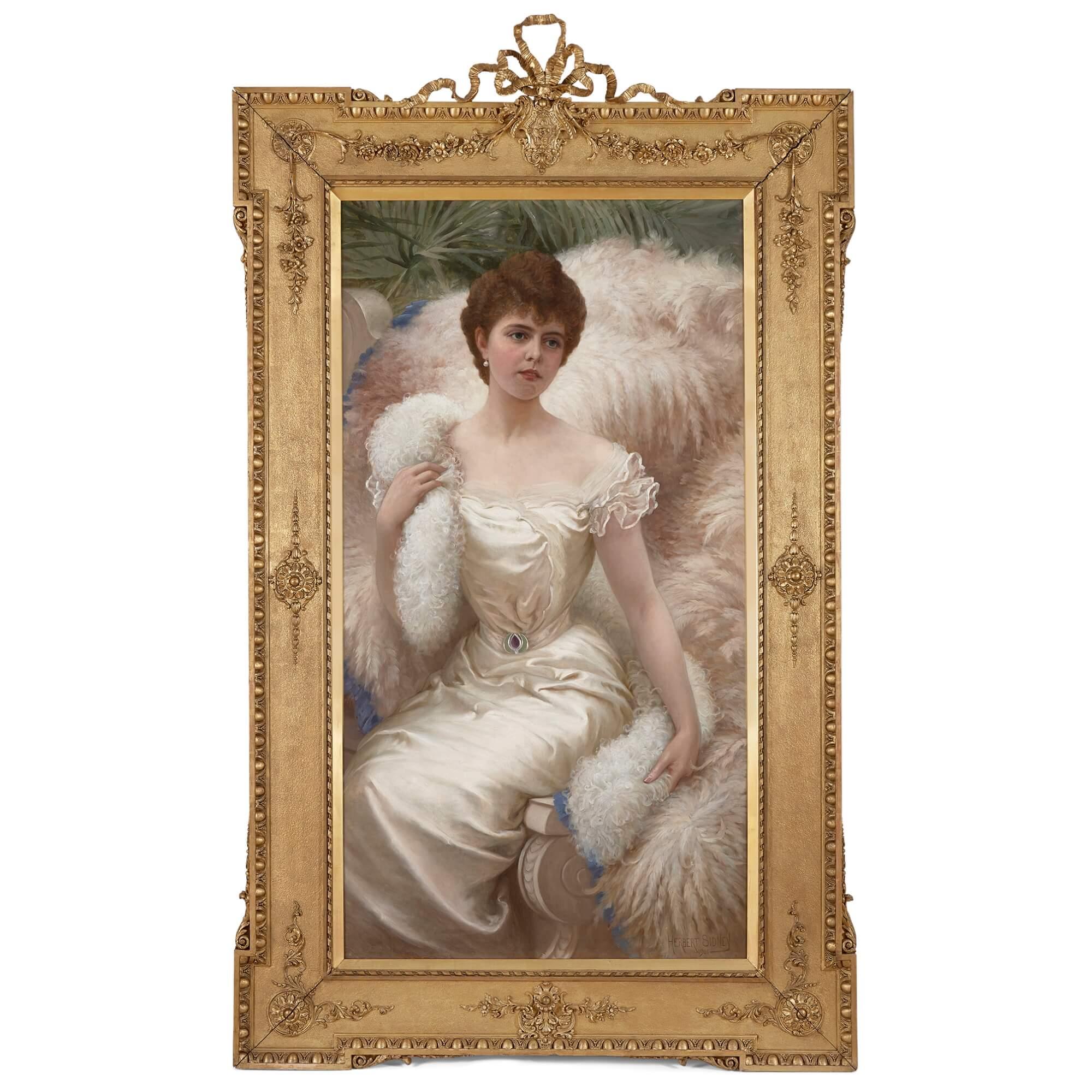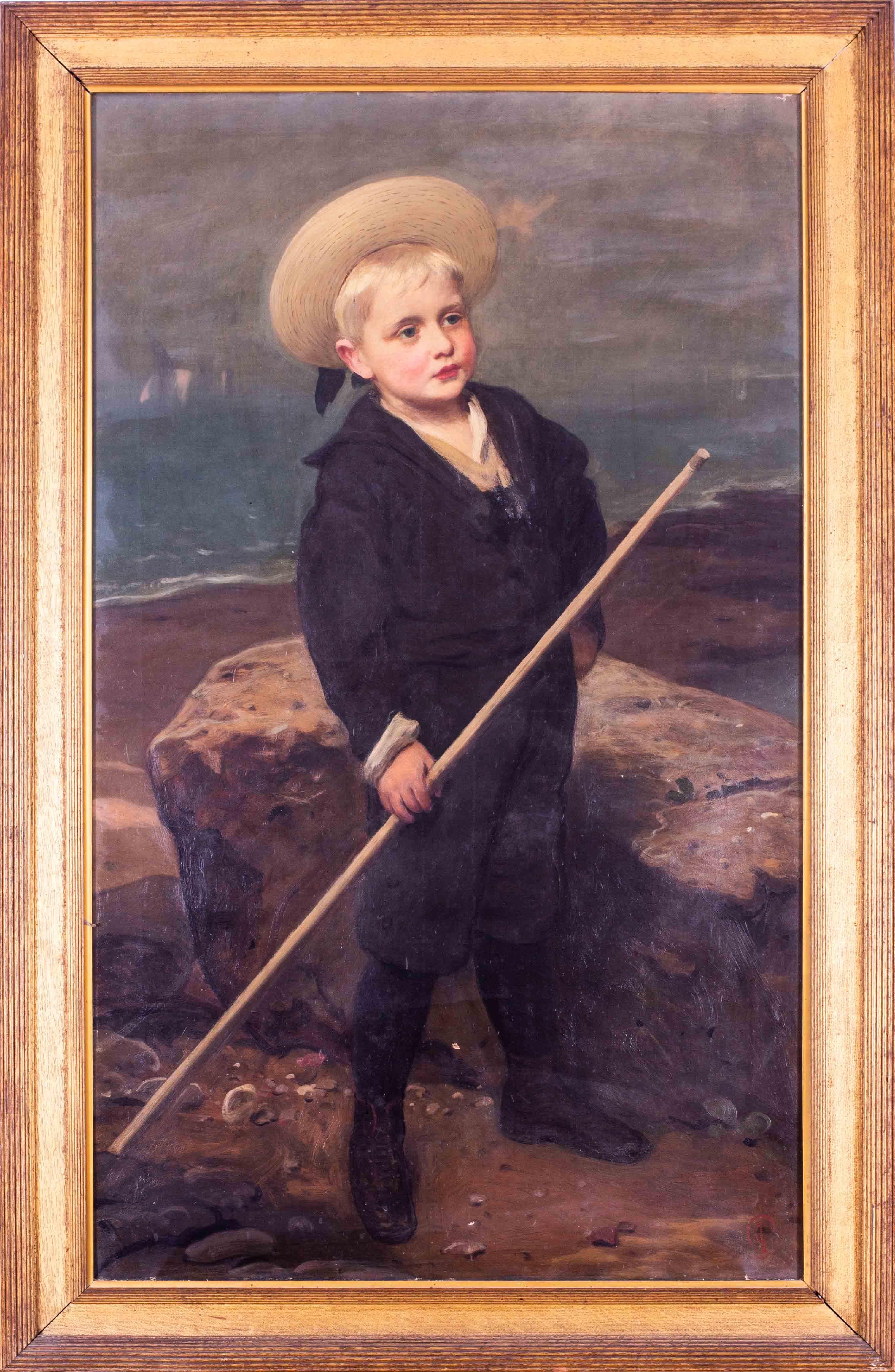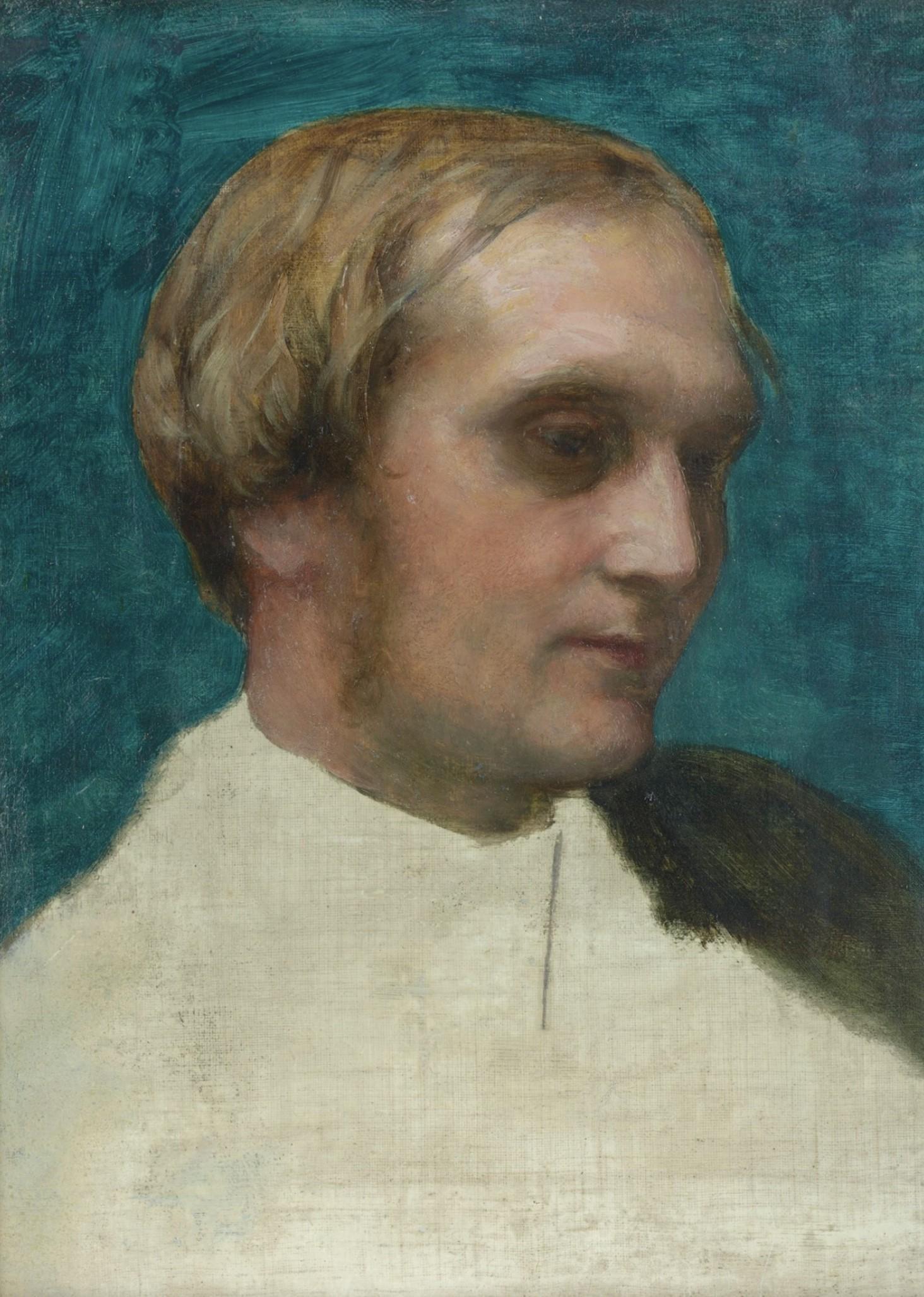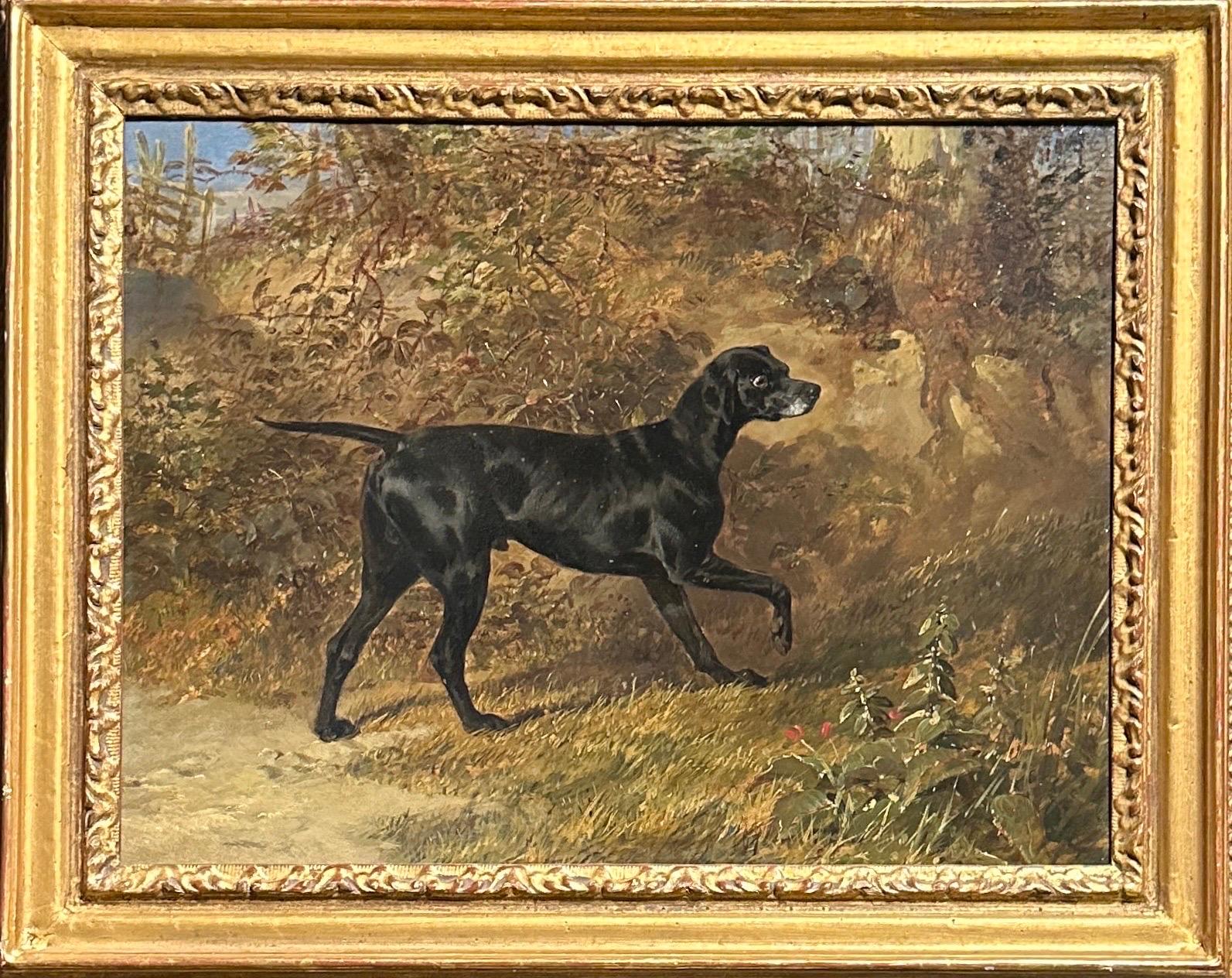Items Similar to Remember the 7th Commandment
Want more images or videos?
Request additional images or videos from the seller
1 of 8
UnknownRemember the 7th Commandment
About the Item
Artist: Unknown
21 ⅝" x 30 ¼" Oil on Canvas
Frame Size: 29" x 35.5"
- Dimensions:Height: 21.625 in (54.93 cm)Width: 30.25 in (76.84 cm)
- Medium:
- Movement & Style:
- Period:
- Condition:
- Gallery Location:Austin, TX
- Reference Number:
About the Seller
5.0
Platinum Seller
These expertly vetted sellers are 1stDibs' most experienced sellers and are rated highest by our customers.
Established in 1964
1stDibs seller since 2019
88 sales on 1stDibs
Typical response time: 2 hours
- ShippingRetrieving quote...Ships From: Austin, TX
- Return PolicyA return for this item may be initiated within 3 days of delivery.
More From This SellerView All
- Painted 19th Century English Cigar CaseLocated in Austin, TXAntique English 1800's cigar case witha portrait of a woman painted on the front. On the back, it reads "Cigares" 5.5 x 2.75 inches Papier mâché, leather, oil paintCategory
Mid-19th Century Victorian Portrait Paintings
MaterialsLeather, Oil, Papier Mâché
- AñoranzaBy Bartolome SastreLocated in Austin, TX"Añoranza" Artist: Bartolome Sastre Medium: Oil on canvas Size: 39.5" x 32"Category
21st Century and Contemporary Portrait Paintings
MaterialsCanvas, Oil
- Snake CharmerBy Bartolome SastreLocated in Austin, TXBy Bartolome Sastre 46" x 35" Oil on Canvas Part of Sastre's series of candid scenes from his travels to India.Category
21st Century and Contemporary Portrait Paintings
MaterialsCanvas, Oil
- Musician in BlueBy Bartolome SastreLocated in Austin, TX"Musician in Blue" Artist: Bartolome Sastre Medium: Oil on canvas Size: 28.75" x 36.25" FramedCategory
21st Century and Contemporary Portrait Paintings
MaterialsCanvas, Oil
- Chief of NavajoLocated in Austin, TX“Chief of Navajo” is a western portrait painting by Texas artist Dr. M.A. Bhatti executed in oil on canvas; measuring 16 x 20 inches. This painting is a stoic depiction of the Chie...Category
21st Century and Contemporary Portrait Paintings
MaterialsCanvas, Oil
- PalmistryBy Bartolome SastreLocated in Austin, TX"Palmistry" Artist: Bartolome Sastre Medium: Oil on canvas Size: 39.5" x 32" FramedCategory
21st Century and Contemporary Portrait Paintings
MaterialsCanvas, Oil
You May Also Like
- Pair of Antique Paintings, Oil on Canvas, Portraits. Around 1850.Located in Berlin, DEPair of antique paintings, oil on canvas, portraits. Around 1850. Portrait of a well-known artist and his wife. Dimensions are per painting...Category
19th Century Victorian Portrait Paintings
MaterialsCanvas, Oil
- Portrait of a Girl with Book, 18th Century Regency Oil PaintingLocated in London, GBOil on canvas Image size: 28 3/4 x 24 inches (73 x 61 cm) Contemporary style gilt frame This portrait is an evocative example of Devis' Regency period portraiture, featuring a pleasant looking young girl holding a book in an outdoor setting. Working with a darker palette, a strongly accented diagonal recession, and dramatic contrasts of light and shadow, Devis heightens the girl's three-dimensional physical presence in the foreground of the composition. The Artist Arthur William Devis (10 August 1762 – 11 February 1822) was an English painter of history paintings and portraits. He painted portraits and historical subjects, sixty-five of which he exhibited (1779–1821) at the Royal Academy. Among his more famous works are a depiction of the Death of Nelson and a posthumous portrait of Nelson. Devis was born in London, the nineteenth child of the artist Arthur Devis and his wife Elizabeth Faulkner. Devis was the younger brother of the painter Thomas Anthony Devis (1757–1810) and of the schoolmistress and grammarian Ellin Devis (1746–1820), teacher, among others, of author of Maria Edgeworth and Frances Burney (later novelist Madame d'Arblay). He followed his elder brother Thomas Anthony in becoming a pupil at the Royal Academy Schools in 1774 and like his brother exhibited at the Free Society of Artists, of which in 1768 their father had become president, and at the Royal Academy. Early on he came to the notice of Sir Joshua Reynolds. He was appointed draughtsman on the British East India Company's packet Antelope in a voyage in 1783, under Captain Henry Wilson. In her he was injured in an encounter with Papuans near the Schouten Islands and was then wrecked on the Pelew Islands before proceeding to Canton and thence to Bengal. During his voyages, the artist received arrow wounds, one of which inflicted permanent injury on his lower jaw. During his time in Bengal, he painted a portrait of Sir William Jones, at the time a judge in Fort William. The painting now hangs at the British Library. He was back in London by 1795 and is recorded on 21 July 1797 as living at 27 George Street, Hanover Square, where he was insured by the Sun Assurance Office. He is noted for his involvement in the creation of the posthumous cult of Horatio Nelson. As she returned from Trafalgar, Devis went out to meet HMS Victory and was present on board the ship during the autopsy of Nelson's body conducted by Dr Beatty, the ship's surgeon. With the help of sketches he took at that time, he painted a heroic Death of Nelson, which proved a sensation. Devis also painted Dr Beatty, and was commissioned by him to produce a half-length painting of Nelson as vice-admiral, which he lent to Emma Hamilton (who later lost it in an accident whilst travelling). Either the original or a copy of this portrait was exhibited at the Royal Academy two years after the Battle and many copies were made of it. Lord Howe owned one, and another ended up in the collection of the National Maritime Museum. It also appeared as an engraving in Beatty's published account of Nelson's death. Other work includes a portrait of King George III on horseback, and a range of portraits of admirals and generals, along with historical subjects, such as the Babington Plot and the signing of the Magna Carta...Category
18th Century Victorian Portrait Paintings
MaterialsOil, Canvas
- 'The Feather Boa, ' a large oil painting of Miss Crofton by Herbert SidneyLocated in London, GB'The Feather Boa,' a large oil painting of Miss Crofton by Herbert Sidney British, 1901 Frame: height 193cm, width 115cm, depth 6cm Canvas: height 143, width 77cm, depth 3cm By the ...Category
Early 1900s Victorian Portrait Paintings
MaterialsCanvas, Oil
- 19th Century British large oil painting, portrait of a young sailorBy James SantLocated in Petworth, West SussexJames Sant (British, 1820-1916) The young sailor Oil on canvas Signed with monogram `JS’ (lower right) 50 x 30 in. (127 x 76.2 cm.) James Sant was a painter specialising in portrai...Category
19th Century Victorian Figurative Paintings
MaterialsCanvas, Oil
- Portrait of Herbert Fisher, Mid-19th Century Oil Painting, Original Watts FrameBy George Frederic WattsLocated in London, GBOil on canvas c.1855 - 1860 Image size: 19 x 14 inches (48.25 x 37.25 cm) Original Watts frame The Sitter Herbert William Fisher (1826 - 1903) was a British historian, best known for his 'Considerations on the Origin of the American War' (1865). Fisher was tutor to the future King Edward VII, and served as Private Secretary to the 5th Duke of Newcastle. in 1863 he became Private Secretary to the Prince of Wales, his former pupil, before being appointed to the position of Vice-Warden of the Stannaries in 1870. One of his daughters, Adeline, married Ralph Vaughan Williams. George Frederick Watts Watts (1817 - 1904) was a British painter and sculptor associated with the Symbolist movement. He is known to have said 'I paint ideas, not things'. Watts became famous in his lifetime for his allegorical works, such as 'Hope' and 'Love and Life' in which the emotions and aspiration life were intended to be represented in a universal symbolic language. Watts was born in Marylebone in central London on the birthday of George Frederic Handel (after whom he was named), to the second wife of a poor piano-maker. He showed artistic promise very early, learning sculpture from the age of 10 with William Behnes, starting to study devotedly the Elgin Marbles (later writing "It was from them alone that I learned") and then enrolling as a student at the Royal Academy Schools at the age of 18. He first exhibited at the Academy in 1837, with a picture of "The Wounded Heron" and two portraits, but his attendance at the Academy was short-lived, and his further art education was confined to personal experiment and endeavour, guided by a constant appeal to the standard of ancient Greek sculpture. He also began his portraiture career, receiving patronage from his close contemporary Alexander Constantine Ionides, who later came to be a close friend. In 1849 the first two of the allegorical compositions which form the most characteristic of the artist's productions were exhibited—"Life's Illusions," an elaborate presentment of the vanity of human desires, and "The people that sat in darkness," turning eagerly towards the growing dawn. In 1850 he first gave public expression to his intense longing to improve the condition of humanity in the picture of "The Good Samaritan" bending over the wounded traveller; this, as recorded in the catalogue of the Royal Academy, was "painted as an expression of the artist's admiration and respect for the noble philanthropy of Thomas Wright, of Manchester," and to that city he presented the work. From the late 1840s onward he painted many portraits in France and England, some of which are described below. Notable pictures of the same period are “Sir Galahad...Category
1850s Victorian Portrait Paintings
MaterialsCanvas, Oil
- English 19th century portrait painting of a Pointer dog in a woodland landscapeBy John Frederick Herring Sr.Located in Bath, SomersetA black pointer in a woodland landscape by John Frederick Herring Senior, circa 1830. Oil on canvas in a giltwood frame. Provenance: Arthur Ackerman and Son Frost and Reed Blains, Bruton Place, London John Frederick Herring, born in London in 1795, was the son of a London merchant of Dutch parentage, who had been born overseas in America. The first eighteen years of Herring's life were spent in London, where his greatest interests were drawing and horses. In 1814, at the age of 18, he moved to Doncaster in the north of England, and by 1815, had married Ann Harris. His sons John Frederick Herring Jr., Charles Herring, and Benjamin Herring...Category
1830s Victorian Animal Paintings
MaterialsCanvas, Oil
Recently Viewed
View AllMore Ways To Browse
7th Art
7th Century
Victorian Vintage Portrait
Victorian Vintage Portraits
Victorian Vintage Portrait Painting
Portrait Scotland
French Lady Painting
Portrait Of Woman In Red
Male Portrait Paintings
Dior King
Portrait Young Girl Painting
Oil Painting Portrait Lady
Boy Portrait Painting
19th Century Portrait Of Woman
English School Portrait
1978 Portrait Painting
Painted Portrait Woman White
Chinese Painted Portraits
